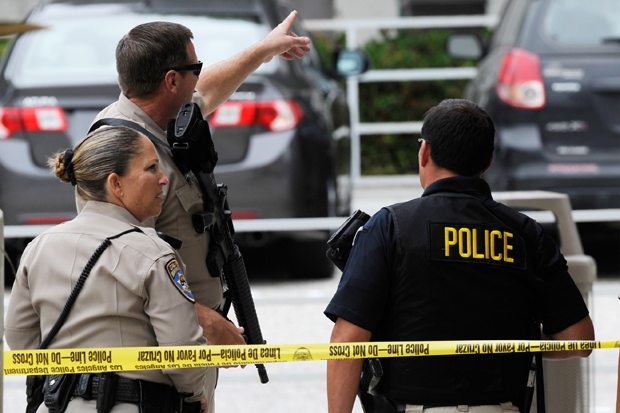Los Angeles ghetto life — thrashed, twisted and black — is not a world that most Americans care to visit. Black Angelinos can be — and for a period in the 1980s and early 1990s, were — murdered for a trifle. The slightest act of ‘disrespect’ may call for a tit-for-tat killing, where an entire family is rubbed out to avenge a perceived affront.
Such disregard for human life is unknown in the white neighbourhoods of LA. Is there a specifically black predisposition to gun crime? Or is that too narrow an assumption? The violence endemic to Watts, Compton and other black LA suburbs is reckoned (by some) to be a delayed response to the cruelty of plantation life. See for yourself, says the veteran crime reporter Jill Leovy: see how the men and women live there in converted garages behind razor-wire fencing — sullen, numbed; how the children are un-childlike; the women hardened.
As a Los Angeles Times reporter, Leovy has done her share of legwork in areas of the city made infamous by gangsta rappers like Dr Dre and Bob Dylan’s beloved Ice-T. All the theory about plantation slavery means nothing if you can’t read the street, says Leovy. In her analysis, turf wars break out in black LA as a consequence of lawlessness, not as a cause. If anything, black neighbourhoods suffer from too little application of the law, not too much. Stop-and-search harassments only generate a hatred and mistrust of authority; what is needed, says Leovy, is a policing that does some good.
Ghettoside, her magnificent, non-fiction police procedural, concentrates on a murder that took place in the 77th Division of LA’s no-go South Central district. In 2007 an 18-year-old African American called Bryant Tennelle was gunned down there by a fellow black man for no clear motive. The murder would have gone unremarked in the press had Bryant not been an LA policeman’s son.
Black-on-black crime is a taboo subject for many liberal Americans, who fear that African Americans might somehow be ‘intrinsically wired for violence’ (as Leovy puts it). Of course they are not, but that does not stop bigots from arguing otherwise. Forty years after the civil rights movement, says Leovy, no one much in America seems to care if so many black men are getting shot up and killed, or if such a high share of the murders remain unsolved. But there are exceptions.
The detective who solved young Tennelle’s murder, John Skaggs, is the hero of Ghettoside. A Republican-voting LAPD stalwart, Skaggs sees himself as a tower of common sense and decency amid the moral bewilderment of South Central. Over the years, the district has become a state within a state, in Skagg’s view, where gang leaders give themselves titles like ‘President’ because they pretty much rule the place.
While other LA policemen joke callously of NHI homicides — ‘no human involved’, meaning black on black — Skaggs is a man moved to compassion by the human suffering and senseless loss. In South Central at that time in 2008, African Americans were being killed at more than seven times the rate of all other racial and ethnic groups in LA combined. The killing, most of it, was the work of young black men inadequately protected by the laws of their own country, the United States of America.
Skaggs, a big-boned man of Scots-Irish descent, was reckoned to be tough enough for South Central, and so it proved. Tennelle’s killers were swiftly rounded up. At the court case it was suggested by the judge presiding that if all ghettoside homicides were investigated with such a single-minded purpose, crime rates in LA overall would reduce appreciably.
In order to write Ghettoside, Leovy ‘embedded’ herself for a couple of years within Detective Skaggs’s police section, riding in his LAPD squad cars and familiarising herself with the Mafia-gangsta nicknames (‘Baby Man’, ‘Beer Can’) as well as the notions of braggadocio and ‘respect’ prevalent in the black asphalt war zone where she found herself. The result, an immaculately researched work of reportage, has not surprisingly generated much discussion in America. Inevitably the book recalls David Simon’s street-savvy Homicide: A Year on the Killing Streets, a 1991 account of murder investigations in Baltimore, which became the basis of the great television series TheWire. Nonetheless, Leovy’s is a distinctive voice; in plain, carefully modulated prose, she suggests that extralegal violence and lawlessness in ghettoside LA is as much the responsibility of white America as of black America.
Available from the Spectator Bookshop, £13.99 Tel: 08430 600033. Ian Thomson’s books include The Dead Yard: Tales of Modern Jamaica and Bonjour Blanc: A Journey through Haiti.






Comments